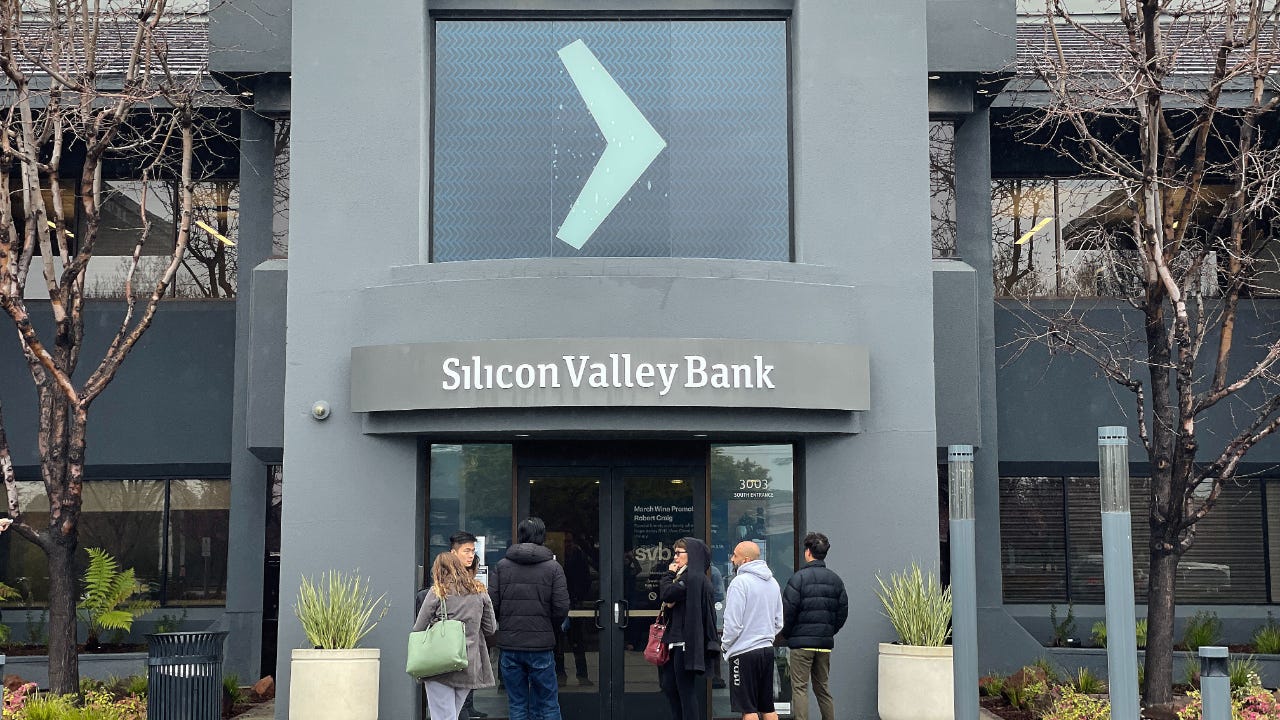What happens when a bank is liquidated?




Key takeaways
- Most bank failures end in a sale.
- When a bank fails, the Federal Deposit Insurance Corp. will take on the bank’s troubled assets and healthy banks may buy the rest.
- Customer accounts may be closed when a bank fails and checks distributed for the account balances or the accounts may be transferred to another institution with little to no interruption to funds access.
The failures of Silicon Valley Bank and Signature Bank in 2023 triggered a host of important questions for consumers: What happens if my bank fails? Are my assets safe? What happens if my bank is liquidated?
Most bank failures end in a sale. The Federal Deposit Insurance Corp. (FDIC) takes on the defunct bank’s troubled assets, a healthy bank buys the rest and customers’ accounts keep right on going.
But when a buyer can’t be found, the bank must be liquidated. From here, things can get more complicated for account holders. Here’s a rundown of that process and what to expect if you’re in this situation.
What is liquidation?
Liquidation is the process of permanently closing a bank and its branches, selling off any assets and using the proceeds to settle as many of the bank’s remaining liabilities as possible. Typically, customer accounts are closed and checks are mailed to account holders for the amount of their insured deposits.
What happens when a bank goes into receivership?
When a bank fails and goes into receivership, another entity typically steps in to manage the affairs of the failed bank. The receiver will work to address all claims against the bank and resolve liabilities. As part of this process, the receiver will also sell off bank assets. In contrast to liquidation, when a bank enters receivership, customer accounts are not necessarily closed. Instead, they may be transferred to another institution.
If you’re not happy with where your accounts land, find another bank. Look for one that has high rates on savings accounts and no (or low) fees.
In a typical bank failure and sale, you may see a different name on the bank’s door and some changes to your account’s terms and conditions, but you don’t have to do much to keep money flowing in and out of your checking account.
But in rare cases — less than 6 percent of bank failures since 2000 — the FDIC has been unable to find a buyer for the bank. Then, liquidation starts.
The last time a liquidation happened was Sept. 13, 2013, when The Community’s Bank of Bridgeport, Connecticut, was closed down by the FDIC.
What to expect if your bank is liquidating
Ultimately, getting your money back is the biggest concern in a bank failure, and the FDIC is the reason no one has lost a penny of insured deposits since the agency was founded in 1933. Still, that doesn’t mean having your checking account suddenly stop working is entirely painless.
If your bank is liquidated, you can expect to receive a check in the mail for your insured assets. During that time, though, you’ll need to be vigilant about what payments might be pending.
Any payments that haven’t cleared the account before liquidation, including checks, will fail. Those bounced checks won’t go against your credit, but account holders are responsible for making sure the bills are ultimately paid, not the FDIC.
Direct deposits into your account at the failed bank may also need to be quickly rerouted to a new account to avoid bouncing back.
Bridge banks can help
In some cases, the FDIC will reopen defunct banks as FDIC-controlled entities for a limited time, often with the help of a local institution.
That’s exactly what happened in SVB’s case. The FDIC took over the bank’s assets and created a bridge bank called Silicon Valley Bridge Bank, N.A. Depositors continued to have access to their funds.
If a bank is big and important enough to the local economy, the FDIC may keep it going for much longer. After the California-based IndyMac Bank failed, it stayed open from July 14, 2008 until March 2009, when the deposits were picked up by OneWest Bank.
What happens if your deposits aren’t insured?
The FDIC insures deposits up to $250,000 per depositor, per account and for each account ownership category. Effectively, this means you may lose whatever amount goes above that threshold, if your bank is liquidated.
However, the FDIC said that all SVB and Signature Bank depositors would be paid back regardless of whether their deposits were insured.
This noted, Yellen has said the FDIC is not considering “blanket insurance” for depositors. Instead, lawmakers in Congress are considering raising the insurance limit, which has remained unchanged since 2010.
Bottom line
It’s rare that banks fail but when they do, there are laws and procedures in place that are designed to protect customer deposits. Often, your account will simply be transferred to another institution. But in some cases, the account may be closed entirely during liquidation. As long as your deposits are within the FDIC insurance limits, you can rest assured that your money won’t be lost when a bank goes under.
Why we ask for feedback Your feedback helps us improve our content and services. It takes less than a minute to complete.
Your responses are anonymous and will only be used for improving our website.




